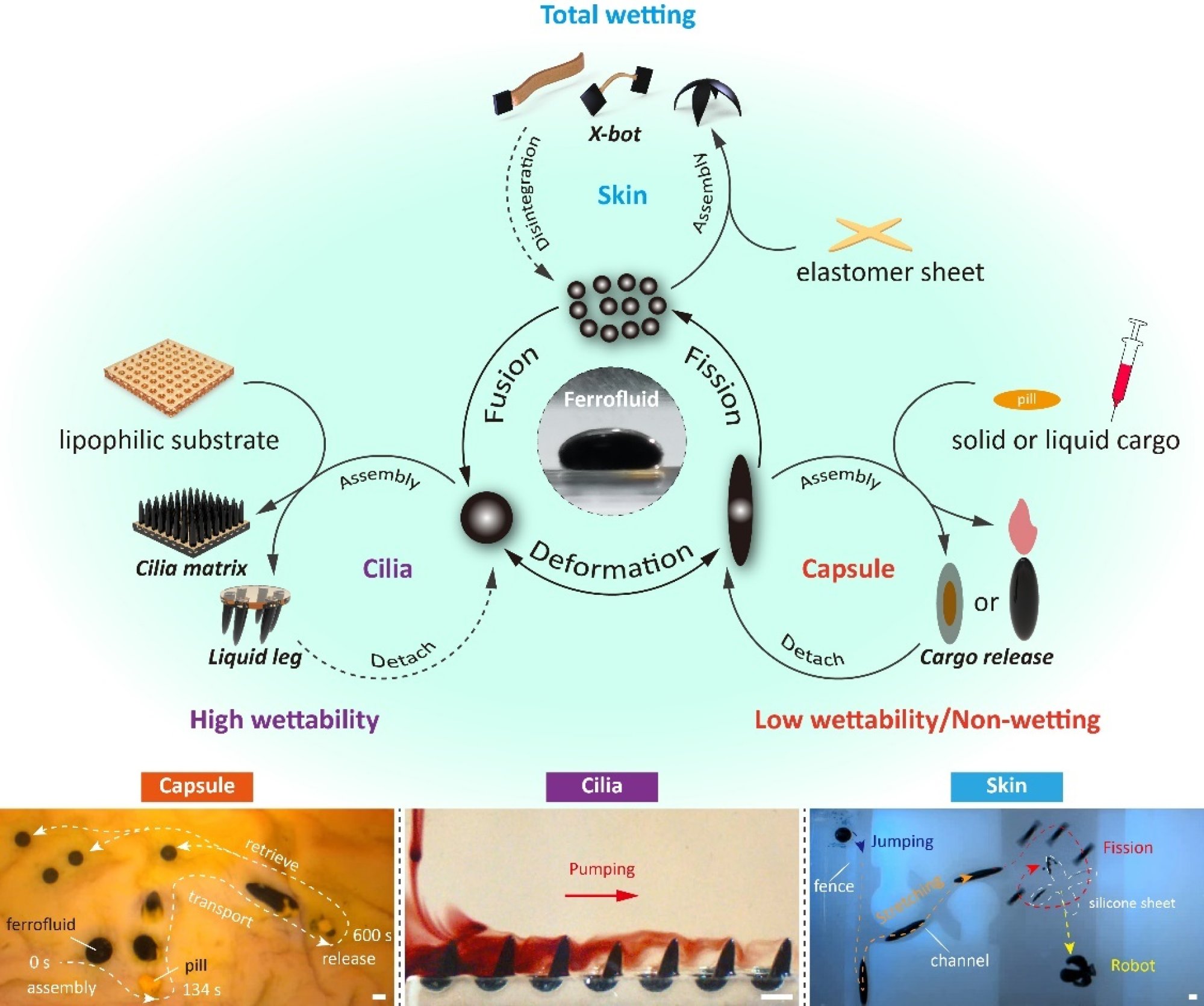
Stretch, jump, wobble: the soft robots that scientists want to send on drug runs in the human body
- The CUHK-Carnegie Mellon team has built devices out of magnetised water that one day might be able to deliver drugs anywhere in the digestive system
- A droplet robot can be manipulated through complex tasks and split and reformed to fit through the smallest openings
The team, from the Chinese University of Hong Kong and Carnegie Mellon University in the US, built the soft robots with ferrofluid – a liquid made up of magnetic nanoparticles suspended in a carrier fluid, such as water.
Using an external magnetic field, the scientists were able to control droplets of the fluid, making them stretch, jump, rotate, tumble, kayak and wobble.
The droplets can even form an artificial skin to wrap around an object and move it, according to the team’s findings, published in the December issue of peer-reviewed journal Nature Communications.
The study’s lead author Zhang Li, from CUHK’s department of mechanical and automation engineering, is also the co-creator of a magnetic slime robot that made headlines in 2022 and uses similar principles.
The aim of both projects is to create miniature soft machines for biomedical applications, such as targeted drug delivery, minimally invasive surgery and cell transplants – something scientists have been trying to achieve for years.
In the latest study, the team manipulated the droplet robots across complex terrains with repeated obstacles and stairs, as well as through tiny holes in walls.
In addition, a single droplet was split into several drops and reformed – just like an amoeba – allowing it to pass through narrow passages with openings smaller than their nominal size.
“Ferrofluid droplets of 4mm (1/8th of an inch) can actively adhere to the pill, endow it with mobility, and move controllably inside an isolated animal stomach model,” the study said.
“When the liquid capsule reaches the infected area, the pills are released on demand by splitting, rather than being scattered randomly throughout the organ.”
Zhang said the liquid capsule could be swallowed by patients or delivered via endoscopy.
“Doctors can use a magnetic control system in hospitals to drive its movements, which are tracked by ultrasound or X-ray fluoroscopy,” he said, referring to a procedure which captures real-time footage inside the body.

“Some endoscopes are equipped with robotic arms, but they can only go so small. Think about delivering the robot to the tiny entrance of a cave and letting it enter,” Zhang said.
“For example, we can first use an endoscope to deliver the soft robot to the stomach and duodenum [the first section of the small intestine], then release it so that it can navigate its way to the bile duct.”
The bile duct consists of 4mm tubes which take fluid made by the liver into the small intestine where it helps the body digest fats and proteins.
Once the soft robot had completed its task, the used capsule could be excreted or retrieved by the endoscope, Zhang said.
The team’s next task is to establish the material’s safety. Zhang said the scientists would continue their research to make sure it was suitable for use inside the human body.


